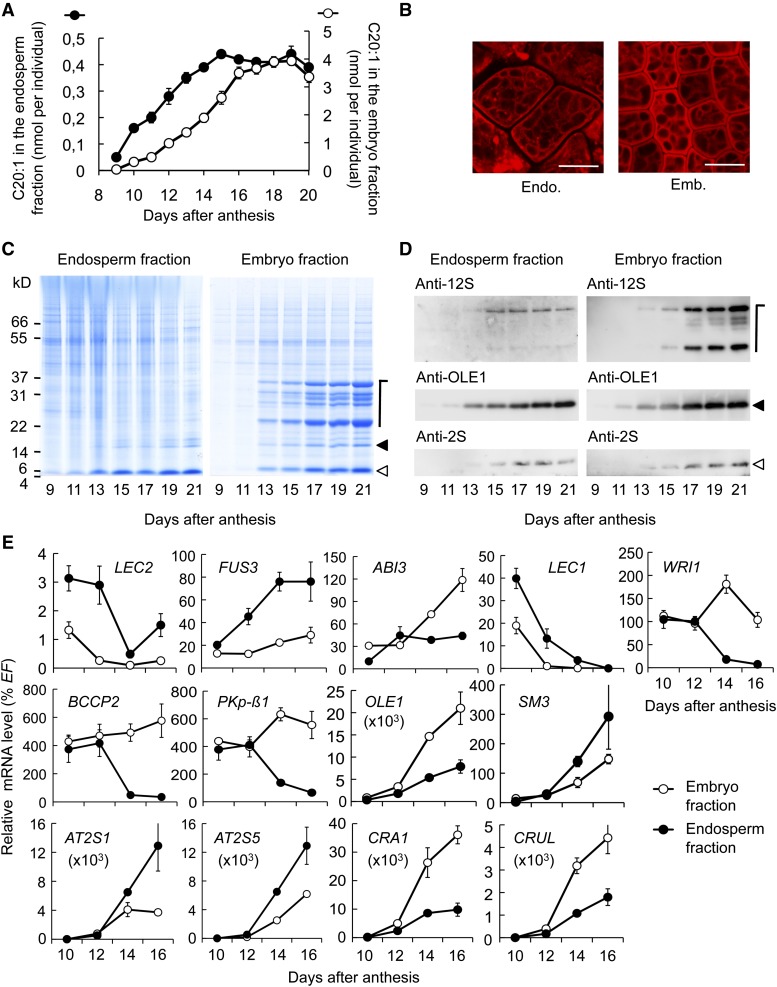Figure 3.
Seed Maturation in the Arabidopsis Accession Col-0.
(A) Time-course analysis of eicosenoic acid (C20:1) accumulation in embryo and endosperm fractions of developing seeds. Values are the means and se of five replicates performed on batches of 20 seeds from five distinct individuals.
(B) Sections of maturing embryo and endosperm tissues observed by confocal microscopy. Triacylglycerols accumulated in oil bodies were stained with Nile Red. Bars = 10 µm.
(C) Time-course analysis of storage protein accumulation in embryo and endosperm fractions in developing seeds. A representative SDS-PAGE gel stained with Coomassie Blue G 250 is presented. Each lane contains an amount of proteins equivalent to 16 (endosperm fraction) or four individuals (embryo fraction).
(D) Pattern of seed storage protein and oleosin deposition in the two zygotic tissues. Immunoblots of a developmental series of embryo and endosperm fractions using primary antibodies raised against 12S cruciferins (anti-12S serum), OLE1 (anti-rS3N serum), or 2S napins (anti-2S serum) and anti-rabbit secondary antibodies conjugated with horseradish peroxidase are presented. The amount of proteins loaded in each lane of the gels corresponding to embryo fractions was equivalent to 0.05 (anti-2S and anti-12S sera) or 0.01 (anti-RS3N serum) embryo. The amount of protein loaded in each lane of the gels corresponding to endosperm fractions was equivalent to 0.2 (anti-2S and anti-12S sera) or 0.04 (anti-RS3N serum) endosperm fraction. Symbols on the left of immunoblots refer to the position of corresponding proteins on SDS-PAGE gels presented in (C).
(E) Time-course analysis of mRNA abundance for genes involved in storage compound accumulation. Values are the means and se of three to six replicates performed on cDNA dilutions obtained from three independent mRNA extractions. EF1αA4 (EF) gene expression was used as a constitutive control.
Emb., embryo fraction; Endo., endosperm fraction.

